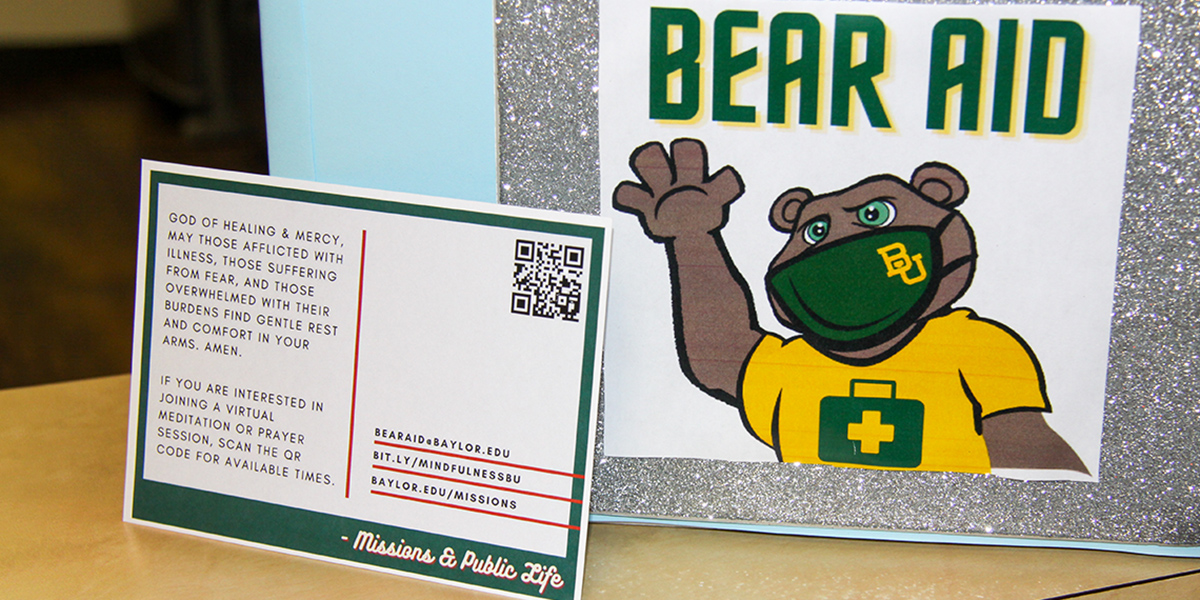From meals to pastoral care, how Baylor helps students in COVID-19 isolation/quarantine

The good news: Since an initial spike shortly after students returned to campus early this fall, Baylor’s fight against the coronavirus seems to be working; the number of active COVID-19 cases on campus has remained below 1% of the campus community for about a month now.
The bad news: That still means there are 50-100 Baylor students in isolation* at any given time (and more in quarantine*); these students must deal with everything from inconveniences (like where to get food, or how to keep up with classwork) to legitimate mental health concerns.
But — more good news: Efforts like the Bear Aid program are in place to help care for such students in as many ways as possible. (These services are available to all on-campus residents; logistics make it more difficult to serve off-campus residents, but plans are in the works to expand these programs’ availability.)
The Bear Aid team, spearheaded by Missions & Public Life, works with units across the university — including Baylor Dining by Aramark and Student Life — to provide services to those who cannot leave their living spaces. Services include:
- meal delivery,
- mail delivery,
- contacting professors,
- library technology and book delivery,
- pastoral care,
- counseling services, and
- housekeeping coordination.
“We know going into quarantine is a bummer, so our overall goal was to make the transition and time away as easy as possible,” says Spiritual Life’s Dominique McShan. “These coordinated efforts supply wraparound care for isolated students. So far, we’ve seen an overwhelmingly positive response.”
According to McShan, meal delivery and package delivery are the services that students take advantage of most. Collectively, the Bear Aid team has:
- sorted and delivered more than 2,000 meals to all 18 residence halls;
- packed more than 250 Grab-n-Go bags for after-hours food needs;
- packed and delivered more than 4,000 bottles of water; and
- responded to more than 875 general support requests.
In addition to the Bear Aid program, Student Life has provided access to virtual resources to keep students involved in campus life. Students can take advantage of online exercise videos, find academic support, and, if they reach the end of Netflix, try “Boredom Busters.” These resources include live webcams at places around the world and various virtual museums.
“While some of our departments are not working in their traditional platforms, we are working together to meet the needs of our students and broader Baylor community,” says Sharra Hynes, dean of students and associate vice president of student life. “We are incredibly proud of how our campus has come together this fall to prevent COVID-19 from spreading.”
Sic ’em, Bears!
(* What’s the difference between quarantine and isolation? At Baylor, a student is quarantined if they’ve had direct exposure to someone who has tested positive, during which time they await test results. A student goes into self-isolation if he/she receives a positive COVID test, lasting 10 days from the positive test date (assuming the student is then also fever-free for 24 hours).)

